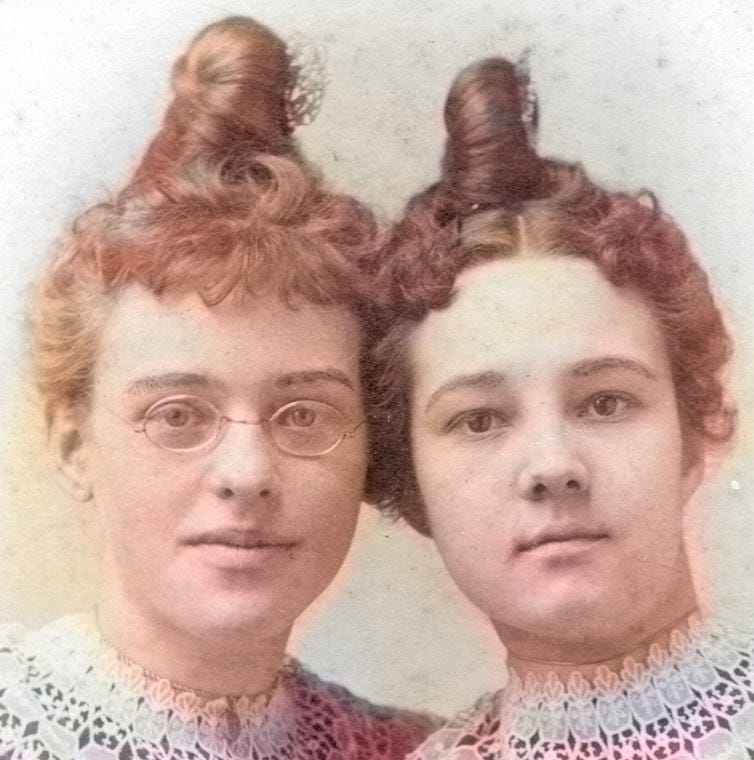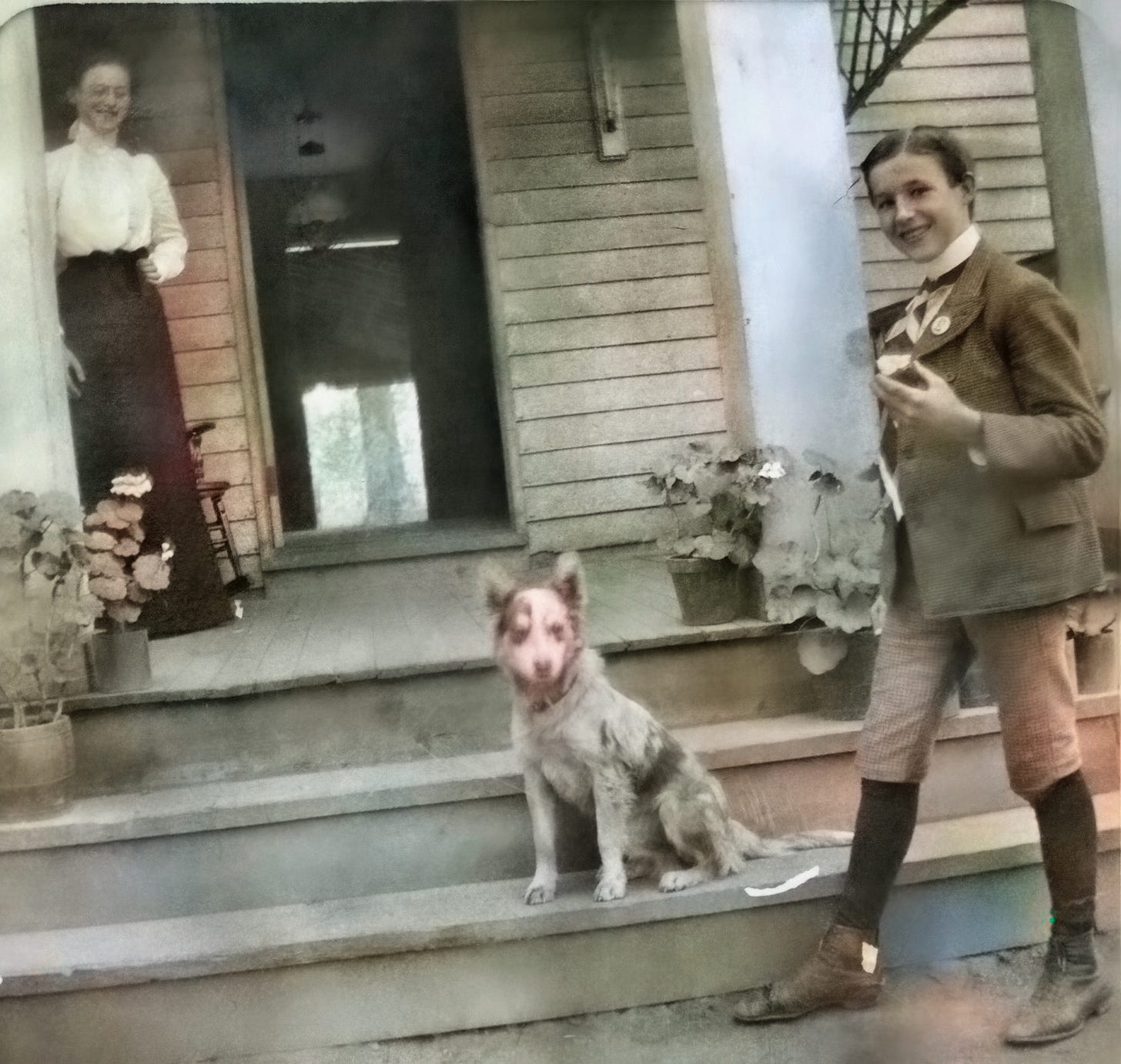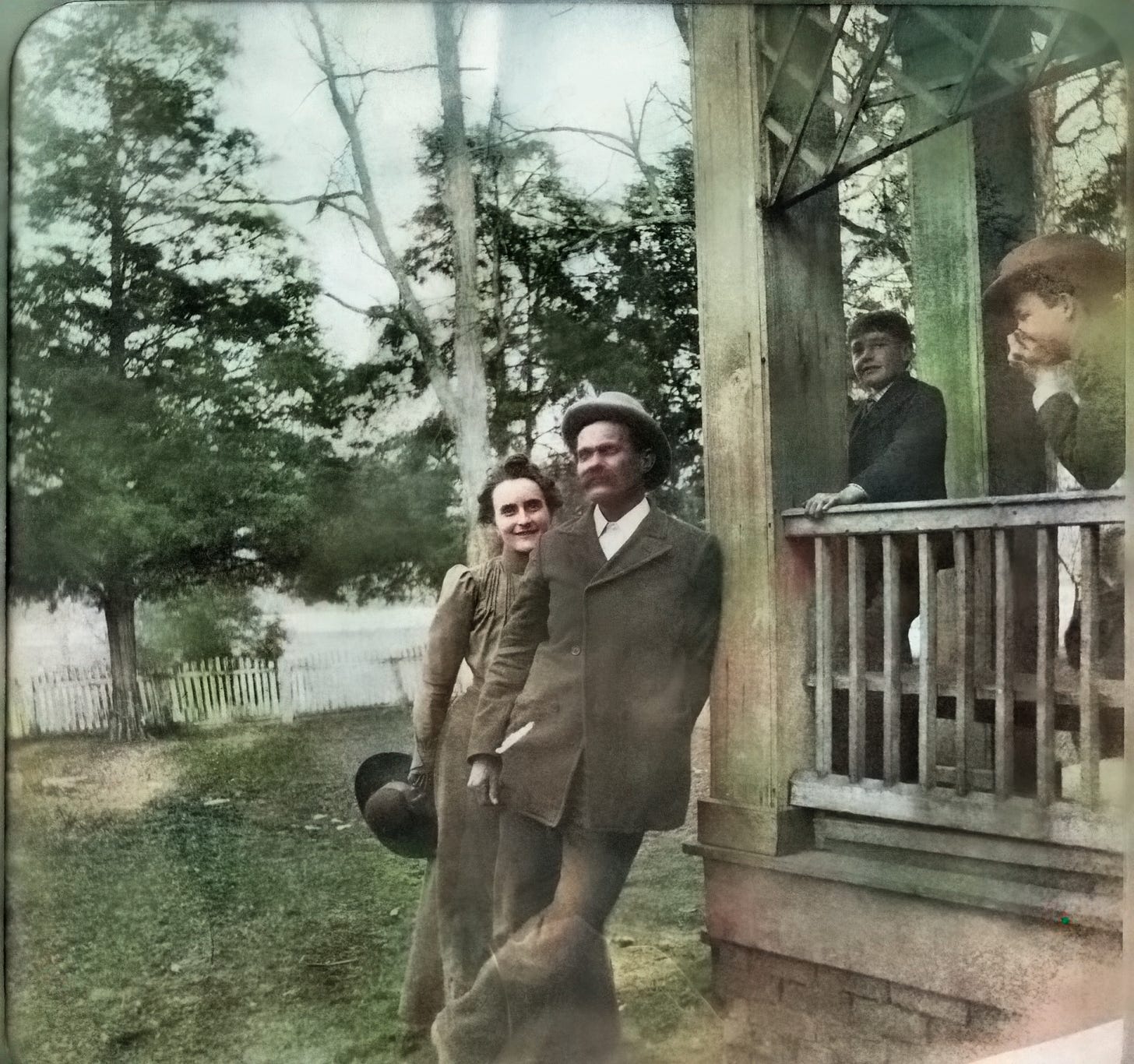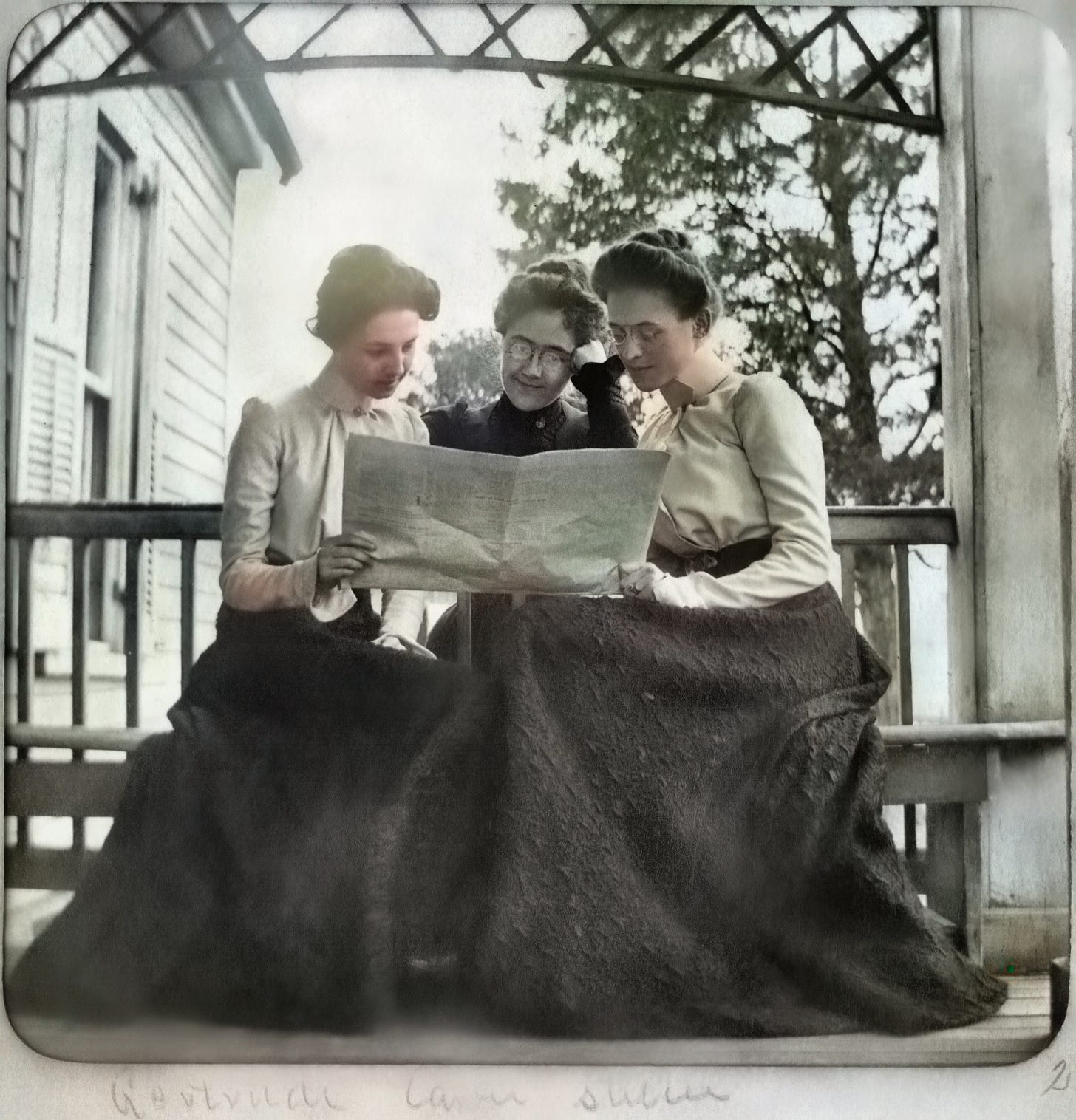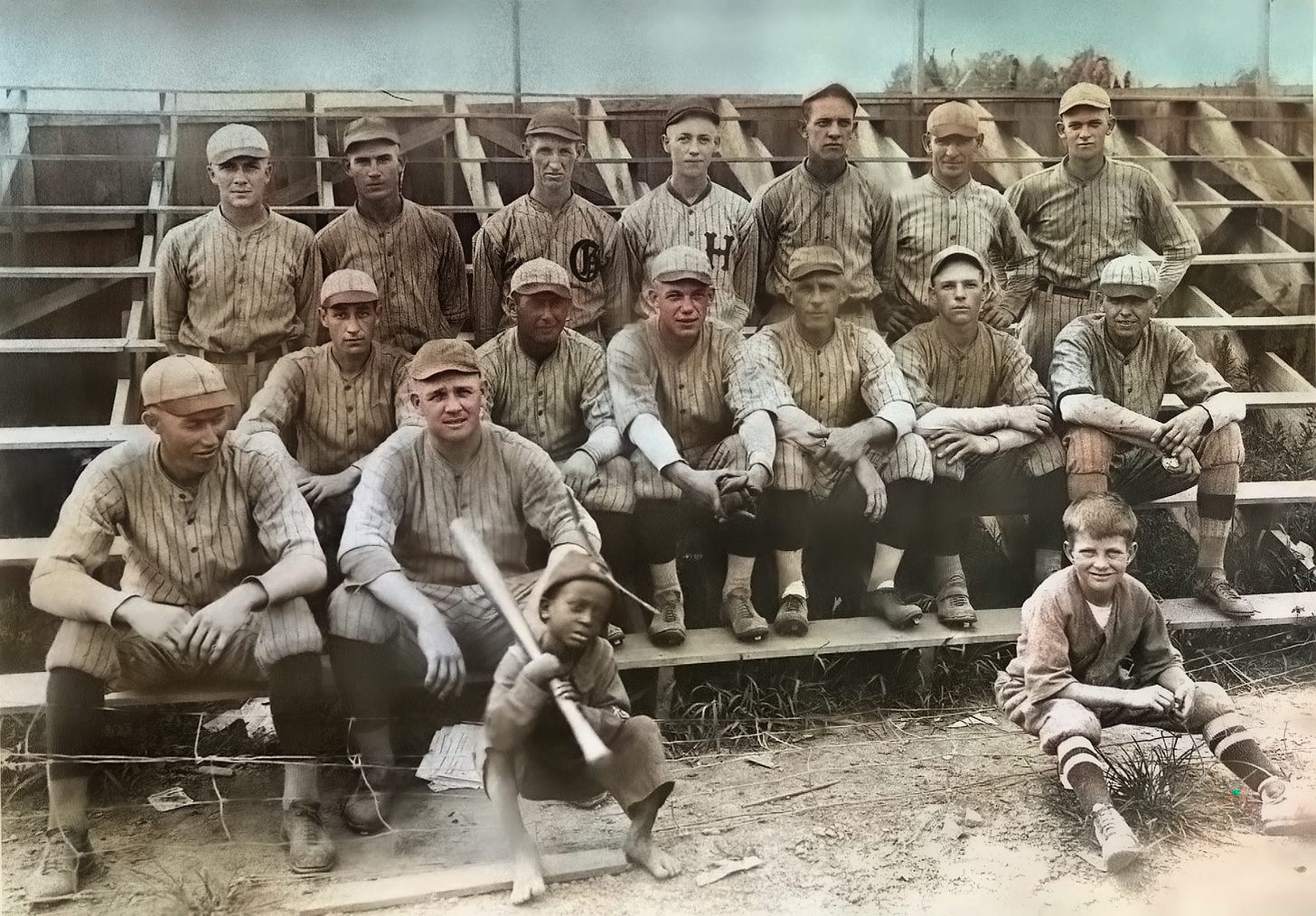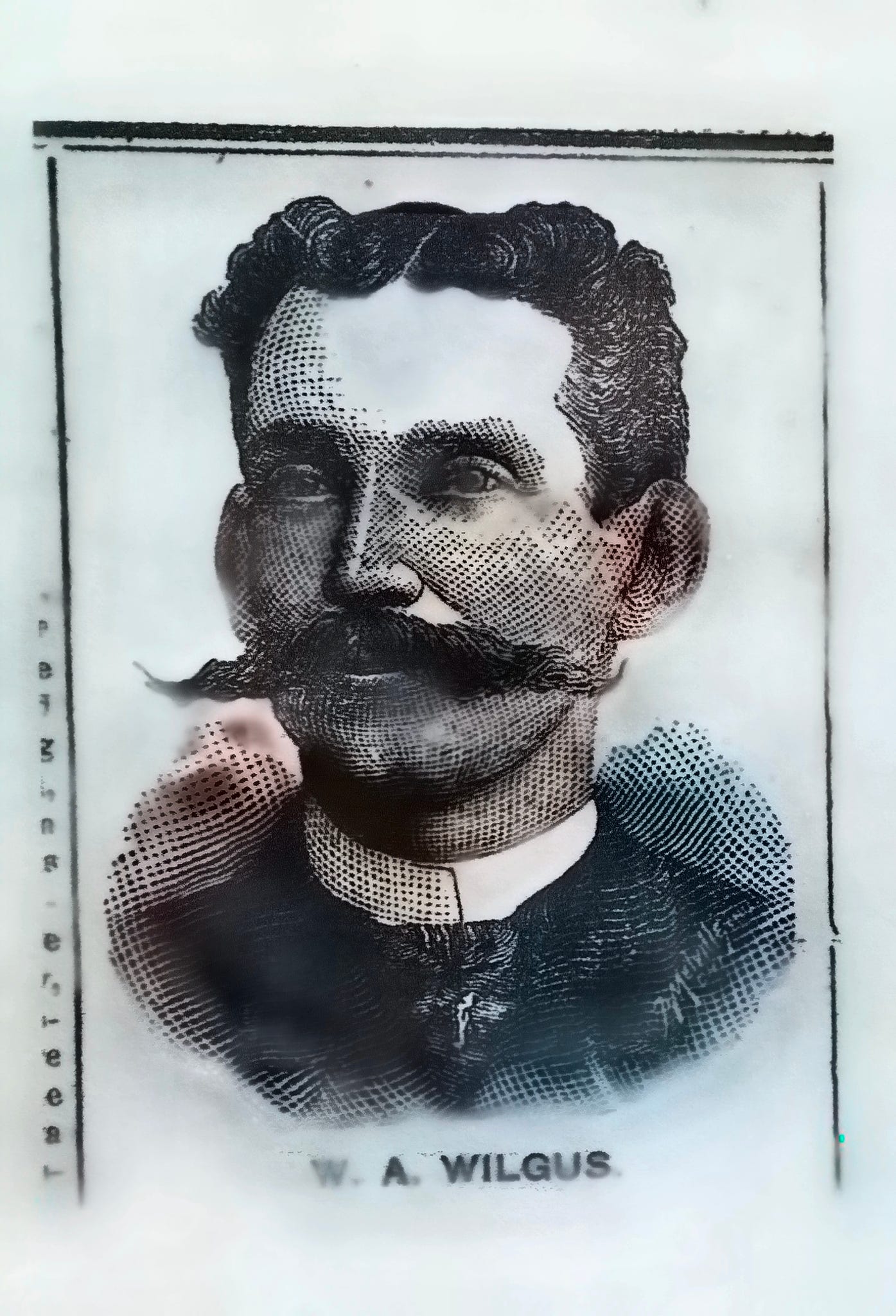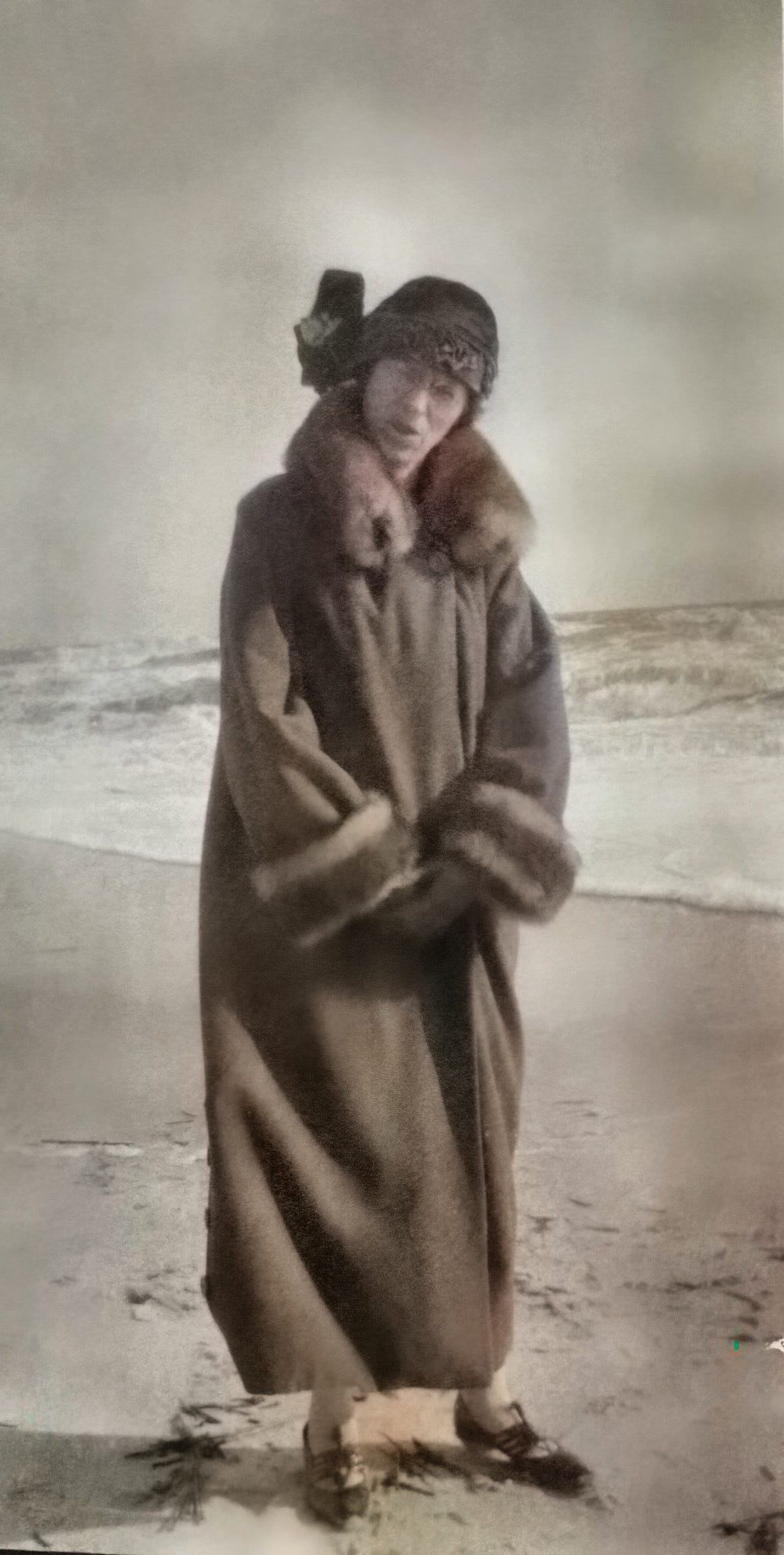Love Beyond the Grave
An unexpected trance communication provided solace to Edgar Cayce's grieving wife
Edith Estella Smith and cousin Gertrude Evans (the future Mrs. Edgar Cayce) had been best friends since early childhood. (They also appear to have visited the same hairdresser!) So close was their bond that the love they shared triggered one of Edgar Cayce's most remarkable trance sessions.
Among the Sleeping Prophet's most fascinating communications are "volunteer" readings—those in which information was given without the conductor asking Cayce to provide it. In 953-10, Cayce volunteered the details of a Milwaukee train robbery and identifies the thieves. In 5749-1, he describes a vision of Christ, and in 254-79, offers a profound message of encouragement to the A.R.E. staff in Virginia Beach. Most inspirational is 5756-13, in which friends and family members reach out from beyond the grave to remind Edgar and his wife Gertrude of the continuity of life and the everlasting power of love. *
Estella Smith, standing on the porch of the family home with her brother Raymond and their dog
5756-13 was volunteered on July 9, 1934, at the end of a check medical reading for Stella Smith, Gertrude Cayce's first cousin and childhood best friend in Hopkinsville, Kentucky. Fifty-four-year-old Stella, dying from uterine cancer, had been in pain for nearly a decade. As Gertrude was some 800 miles away in Virginia Beach, she was unable to comfort her friend and was distraught at the prospect of her passing. Then came the uplifting 5756-13.
"It's one of those things that come [in the readings] at times when we wonder what it is all about," Edgar remarked in a letter to a friend.
The reading came through at the conclusion of 569-22, just after Cayce, in trance, spoke the words: "We are through." Only Cayce was thirty–five minutes from being through!
After Gertrude gave Edgar the suggestion for waking, he ominously lay silent for several minutes, then spoke again: "There are some here that would speak with those that are present, if they desire to so communicate with them."
Gertrude, surprised, told Edgar to go ahead. "We desire to have at this time that which would be given."
While still in a hypnotic trance, Cayce proceeded to act as a receiver for communications from a variety of deceased family members and loved ones, and similar to other trance sessions, would have no conscious memory of what transpired.
A virtual stampede of Gertrude Evans Cayce’s deceased family rushed to reach out to her through a reading her husband Edgar gave for Estella.
Once the channel was opened, so it seemed, there was a virtual stampede of those on the other side waiting to come through.
Cayce, overwhelmed, blurted out, "Don't speak all at once!"
Gertrude, who was conducting the reading, and Gladys Davis, who was taking stenographic notes, and two others in the room—secretary Mildred Davis and Edgar Cayce's father, Leslie—didn't have a clue what Edgar was talking about until a minute or so later when familiar names were referenced.
The first name to come up was "Uncle Porter," who had died in 1891. Then came "Dr. House," the physician who had married Gertrude's Aunt, Carrie Salter, and had been the chief physician at the Cayce hospital in Virginia Beach before his death in 1929. The spirit speaking to Cayce at this point in the reading identified himself as Gertrude's brother, Hugh Evans, who had died from tuberculosis in Texas in 1910.
Most remarkable was that all these people, along with others who were soon to make an appearance in the reading, were together as a family on the other side, just as they were previously together in flesh and blood. And more than just this, they were apparently living together in the afterlife in a home built by Gertrude's beloved grandfather, Samuel Salter, who had been a noted architect and builder before his passing in 1897.
Just as the senior Salter had lovingly constructed the home where three generations of his progeny had lived and raised their families and was where Edgar and Gertrude got married, he was back at work again, only on the other side. Never mind that he and the others who came through in the reading were all buried in the same cemetery in Hopkinsville, Kentucky
Gertrude Evans Cayce, her aunt Carrie Salter (soon to become Mrs. Thomas House), and Estella Smith
So too was Gertrude's brother, Hugh Evans, back to doing what he most enjoyed in life. The former short-stop for the Hopkinsville Moguls baseball team was now, on the other side, captain of the team. The character played by James Earl Jones in the movie Field of Dreams nearly had it right: "Build it and they will come."
Hugh Evans of the Hoptown Moguls was back with the team!
Unfortunately for everyone concerned, Gertrude and the others in the room could only hear half the conversation—only what Edgar, in trance, was saying to the spirit group. "He spoke as if over a telephone and we could only hear his side," Gladys later remarked.
One of the spirits that Edgar desired to communicate with was his mother, but she wasn't present. Hugh Evans—or whoever was speaking at that moment in the session—said not to worry. She was in another dimension, or sojourning in another place, and would presumably be joining the others when the time was right.
Another of the deceased referenced in the reading, and living in the new Salter house, was identified only as "little baby," and was presumed by Edgar and Gertrude to be their deceased child, Milton Porter Cayce, who passed in 1911 when he was less than two months old. On the other side he was apparently fully grown and was soon to come back or reincarnate in the flesh and blood.
“Little Baby” Milton Porter Cayce, who died in early childhood, was ready to incarnate again
A message also came through for stenographer Gladys Davis from her deceased father, Thomas Jefferson Davis. Her father wanted Gladys to tell her older sister, Mary Frances, whose nickname was Tiny, not to be so severe on their younger sister, Lucile, who was called Cille. Unless she backed off, there would later be greater family discord.
Also came a message for Gladys' cousin, secretary Mildred Davis, who was sitting in on the trance session. But what exactly she was told, and by whom, isn't clear because those on the other side appear to once again be speaking all at once. Further, the meaning of remarks made when the reading was given is lost to us today because neither the Cayce nor Davis families submitted a report detailing who was who in the reading or what the significance of the messages was.
Among the more cryptic references are those pertaining to Cayce Jones, the son of Edgar Cayce's best friend and fishing buddy Lamar Jones. What makes this reference so fascinating comes from what we know about Cayce Jones from the 318 series of readings. Jones was the reincarnation of Edgar's deceased younger brother, Thomas Cayce, and in his present incarnation as Cayce Jones, he had the ability to see ghosts. Now, in volunteer reading 5756-13, Edgar Cayce speaks to one of the ghosts who visited with adolescent Cayce Jones. "It was you he saw!" Edgar blurts out but doesn't give us a name.
Similar to the cryptic Cayce Jones reference is an appearance by Cayce family friend William A. Wilgus, who had died in 1914, and was laid to rest in Hopkinsville's Riverside Cemetery along with virtually everyone else in 5756-13. Wilgus, who had once employed teenage Edgar as a hunting guide, had been so impressed with young Edgar that he had offered to pay his college tuition. Judging from the one-sided conversation now taking place, Wilgus had lost his interest in hunting, and taken to religion. Somehow or another he is arriving in town—presumably Hopkinsville—by train. Accompanying him in the Pullman are no less than the deceased Dwight Moody and George Stewart, revivalist pastors who had been such an inspiration to Edgar as a young man.
William Wilgus sought to set the record straight about a bequest he had left Edgar Cayce before his death.
The otherworldly stream of consciousness ends with a matter-of-fact statement similar to how one might end a friendly telephone conversation: "Alright. Good-bye."
Some or all of the entities are back in 5756-14, which was conducted eight days later to make sense of the earlier reading.
One of several interesting points in this follow-up reading is the recommendation not to use the term "spirit communication" for what occurred in the previous volunteer reading, but to rather think of it as "soul communication." In other words, the otherworldly visitors were not ghosts or trapped spirits. They were the souls of loved ones who had continued the journey into the next dimension.
As Cayce poetically makes clear, "the soul lives on," and all that has changed is "the release of the soul body from a house of clay." The message here, as later in the reading, is the same. Those deceased whom you love and who love you are still with you, including deceased babies. Edgar and Gertrude are told: "They have gone nowhere; they are about thee EVER. Thou hast seen [the presence of] thine mother; thou hast seen thine child… that will come again."
Cayce goes on to describe that with the proper attunement, communication between the dead and the living may take place, and that such attunement had occurred while Cayce was giving the reading for Stella. The great love and empathy Edgar and Gertrude have for Stella has apparently permitted what is described as "a oneness of purpose." Further, Cayce is said to have the ability to use this channel on a more frequent basis to contact the dead, but is counseled from doing so. Delving into such realms creates great strain and may lead to dementia, he is told.
"And he is thought crazy enough anyway!" comes the message.
The most important thing conveyed is the assurance of the continuity of life and the power of love. This is poignantly stated in the second to last exchange when Gladys asks how it is that her beloved father came through in the message to her. Cayce says: "LOVE goes far beyond what ye have called the grave."
the last known photo of Edith Estella Smith, 1880-1943, taken on as visit to Virginia Beach
*these and other volunteer readings can be accessed online at edgarcayce.org




